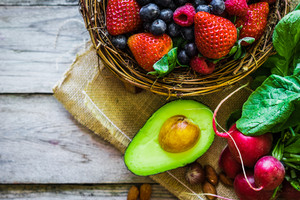The Benefits of Lean Protein

Lean protein is an indispensable nutrient, aiding muscle growth, fat reduction and overall wellness. Packed full of essential amino acids needed by your body for optimal functioning, lean proteins can be found in various food products and found within them.
Protein is one of the three macronutrients your body requires for survival and well-being, alongside carbohydrates and fats. Protein also acts as fuel when exercising, helping maintain lean muscle mass.
Lean proteins can be found in many food items, from meats and eggs to nuts. Some are lower in saturated fat and cholesterol than others, enabling you to get all the essential proteins without compromising on healthy nutrients.
Egg whites, skinless chicken breasts and lean beef are great sources of lean protein that are low in both calories and fat – perfect for adding to any meal!
Consuming high-quality protein can keep you feeling full for longer and prevent unnecessary snacking. Plus, it will boost your metabolism so you’ll burn more calories at rest!
Meditation also has a beneficial effect on blood pressure and cholesterol levels, helping reduce your risk of heart disease and diabetes.
Another source of lean protein includes low-fat milk, yogurt and cottage cheese – these foods are low in saturated fat and cholesterol content while still offering plenty of essential vitamins and minerals.
Calcium can be beneficial to bones and teeth. Although whole milk contains many fat and caloric calories, so consuming low-fat or nonfat versions may be preferable.
Another way to ensure you get enough protein is to consume plenty of fruits, vegetables, and grains containing fiber – which not only keeps you feeling full for longer but can help decrease cholesterol levels as well.
Strawberry slices contain about 25 calories and 2 grams of protein per serving, with similar amounts found in other fruits such as peaches, nectarines and plums.
Beans, lentils and other plant-based proteins such as dry beans are an easy and satisfying way to add lean protein into your daily diet. With loads of fiber and minimal calories per serving, they help ensure you enjoy every bite!
Foods high in fiber, plant compounds and vitamins and minerals are ideal options for vegan and vegetarian diets, while also offering plenty of nutritional support to maintain overall good health.
Avocado, kale and spinach are also excellent sources of lean protein. Each is packed with essential vitamins and minerals that boost both immune health and cardiovascular wellness.
Fatty fish such as salmon, tuna, sardines and anchovies provide lean proteins in an excellent form of lean nutrition. Omega-3 fatty acids present in these species have been linked with improved cardiovascular health and reduced inflammation throughout the body.
Foods high in saturated fat and cholesterol should be chosen carefully to minimize their impact on blood pressure, LDL (bad) cholesterol levels and chronic health conditions.
and soul Ditch the processed junk Eating for the seasons From farm to table Nourish your body Whole Food Diets



